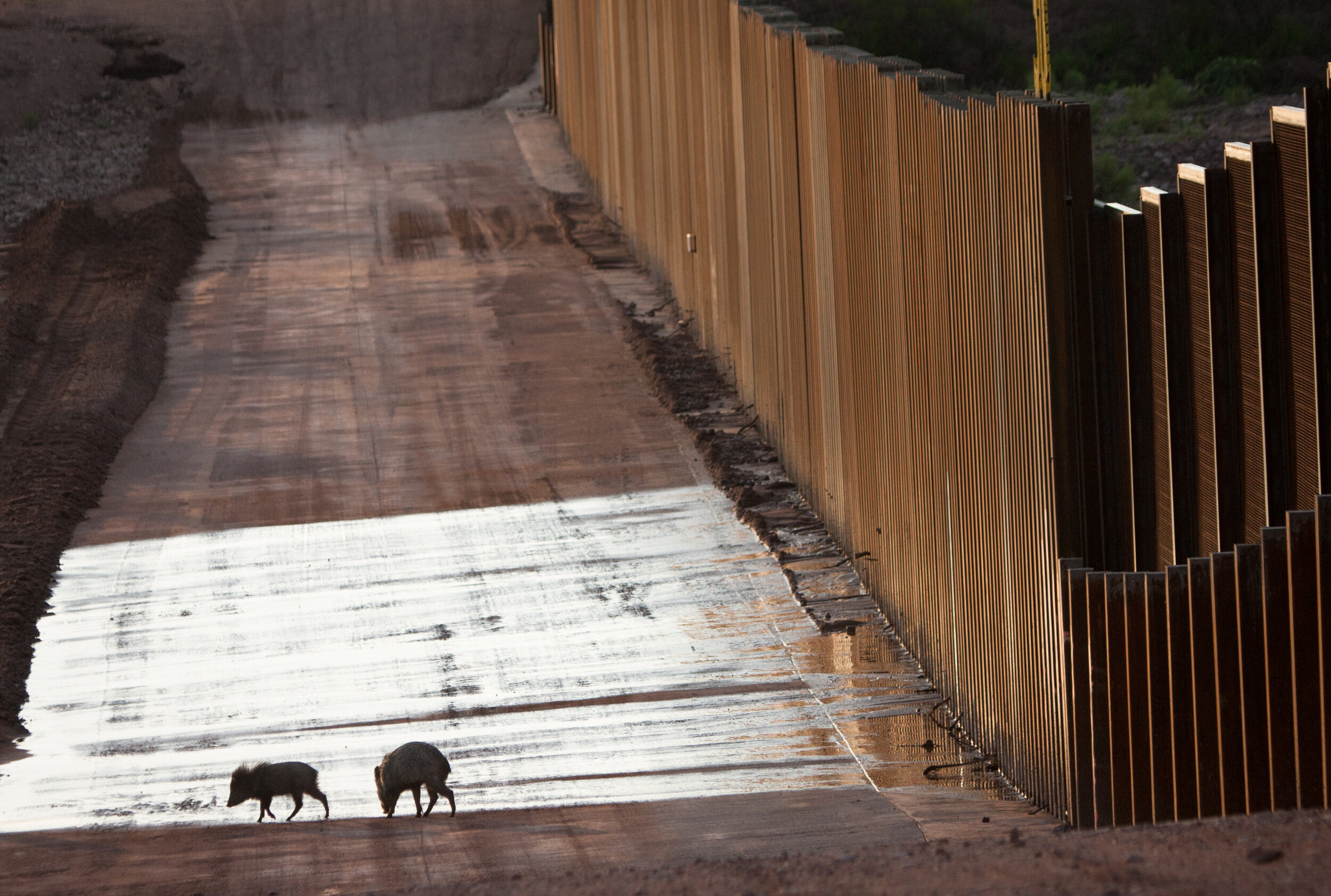US-Mexico Border Wall
30 Years of UNited states wall building
In November 1989 the Berlin Wall came crashing down. One of the most iconic border walls in human history had fallen. The world’s people cheered, perhaps none so loudly as those in the United States. But, within five years the United States, under the direction of President Bill Clinton, would start building its own border wall at the US-Mexico border. That wall has been under intermittent construction for the past 25 years. It is currently about 800-miles of fortified structure along a 2000-mile border. The US-Mexico border wall severs some of the richest wildlife communities and oldest human settlements in North America.
President Clinton’s wall was limited to the cities of El Paso and San Diego, where poor farmers displaced by NAFTA had begun crossing in increasing numbers in the mid-1990s. The wall did not stop desperately poor migrants, it re-routed them into harsh terrain in the Southwest, where many thousands died as a result of the Clinton administration’s “prevention-by-deterrence” border policy.
After the 9-11 terrorist attacks in 2001, the right-wing of the Republican Party began using the attacks as an excuse for building more wall on the US-Mexico border, even though the attacks had nothing to do with this border or undocumented immigration (the 9-11 terrorists came through Canada on legal visas). But with the country in a state of fear, Congress passed the RealID Act of 2005, which allowed the head of the newly created Department of Homeland Security to waive all laws to build a border wall. This was followed by the Secure Fence Act of 2006, which mandate the construction of about 700 miles of border walls and other barriers on the US-Mexico border. This construction has destroyed, fragmented and degraded hundreds of thousands of acres of wildlife habitat, increased an already tragic rate of migrant deaths, and further imperiled more than 100 endangered species on the border.
For the past decade Congress has used taxpayer dollars to build border wall, despite no evidence that it has any measurable effect on undocumented immigration. Regardless of the destructive impacts on people and the environment, border wall construction continues to receive bipartisan support in the House and Senate. Here are four bills where Members of Congress have gone on the record supporting a border wall.
Border wall legislation since 2006
The first miles of border wall were built in the 1990s by Democratic President Bill Clinton. There have been four key votes in Congress relating to the US-Mexico border wall over the past decade. Each one has had bipartisan support. Those votes are:
The Secure Fence Act (2006) – This legislation mandated that the Department of Homeland Security construct about 700 miles of border barrier on the US-Mexico Border. It passed with bipartisan support and resulted in about 350 miles of wall being built by presidents George W. Bush and Barack Obama. Secure Fence Act Information and Roll Call Votes.
The Border Security, Economic Opportunity, and Immigration Modernization Act (S744)(2013) – This legislation passed the US Senate with the support of every Democrat who was serving in the senate in 2013. Under a provision called the “border surge” the bill provided some $40 billion for what Senator John McCain called “all out militarization” of the US-Mexico border, including $20 billion for border wall construction. The bill would have destroyed the future for jaguars, ocelots, Sonoran pronghorn and dozens of other endangered borderlands species. But it was never passed by the House of Representatives. 2013 Immigration Bill Information and Roll Call Vote.
The 2018 federal budget–This appropriations bill provided $1.6 billion for border barrier enhancement and construction, along with an increase in border militarization. This funding was used to begin the first major border wall construction under the Trump administration, severing critical migration corridors for endangered Mexican gray wolves in New Mexico and decimating rare national wildlife refuge habitat in South Texas. It was passed with bipartisan support. House Roll Call Vote / Senate Roll Call Vote
The 2019 federal budget–This budget provided $1.3 billion in funding for border wall construction and was passed with bipartisan support. The funding was approved only after the longest partial government shutdown in US History—a shutdown over border wall funding. The Democrats eventually gave in and provided funding for wall, but the shutdown proved that we can stop border wall if more voters will get involved and make calls to their members of Congress. House Roll Call Vote / Senate Roll Call Vote.
Members of Congress need to hear from their constituents about the billions of dollars of taxpayer money that have been spent on border wall.

